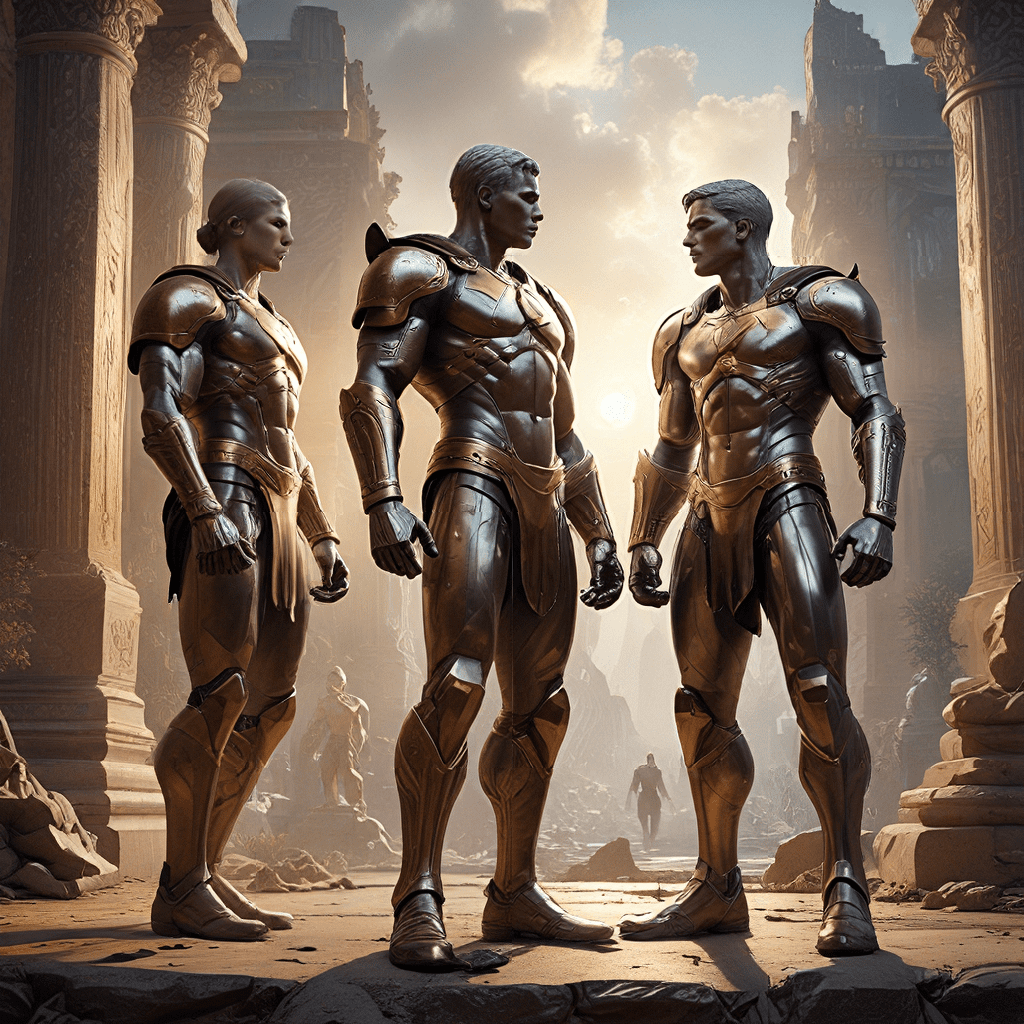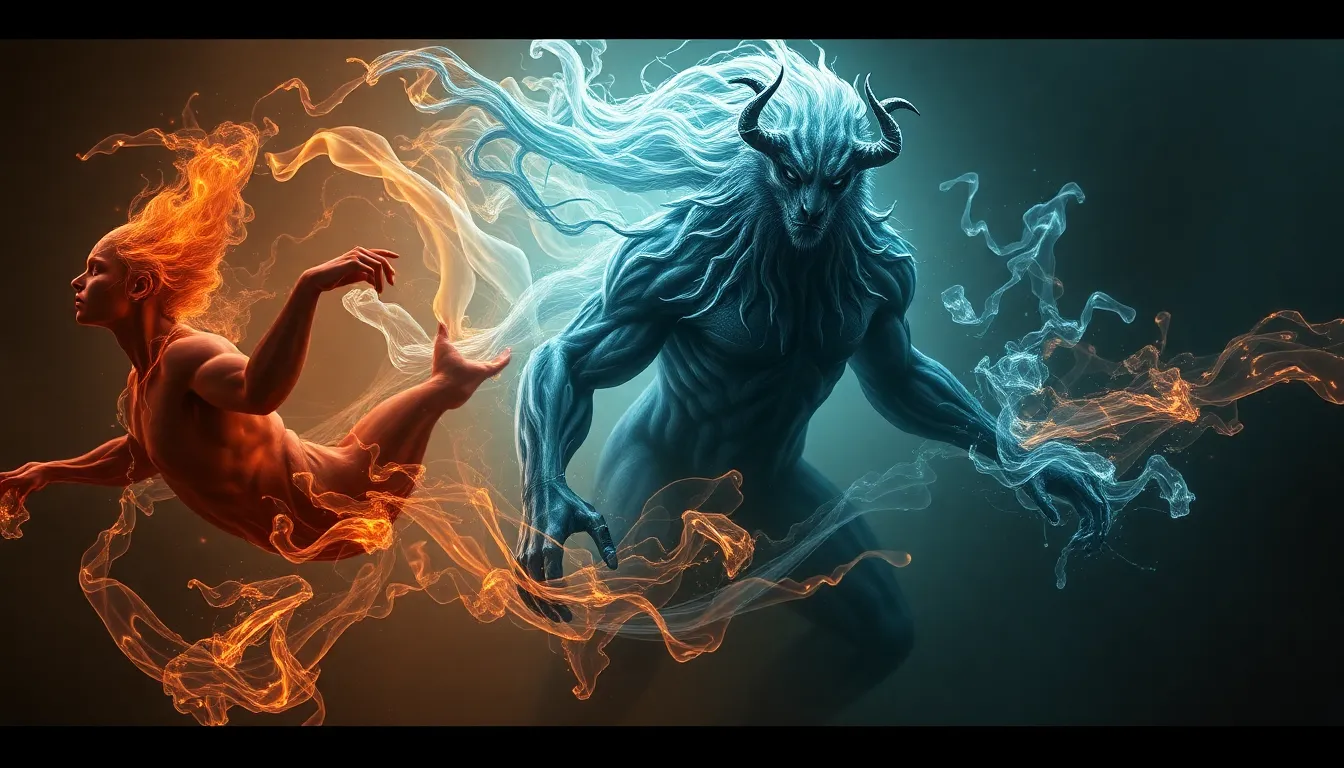Introduction
The myth of the hero twins is a widespread and enduring narrative found in cultures across the globe. From the ancient Greeks to the Native American tribes, the stories of these extraordinary siblings have captivated imaginations for centuries.
This article delves into the fascinating world of the hero twins, exploring their prevalence in mythology, their diverse cultural interpretations, and the various theories surrounding their origins and significance.
The Hero Twins in Mythology
The Widespread Prevalence of the Myth
The prevalence of the hero twin myth is truly remarkable. It appears in countless cultures, spanning continents and traversing vast stretches of time. From the ancient twins Castor and Pollux of Greek mythology to the equally renowned Romulus and Remus of Roman legend, the stories of these extraordinary siblings have resonated with people across the globe.
The geographical distribution of the hero twin myth is equally impressive. It is found in cultures as diverse as those of Europe, Asia, Africa, and the Americas. This widespread presence suggests that the myth may tap into fundamental aspects of the human experience, exploring themes that resonate deeply with people from all walks of life.
The Duality of the Hero Twins
One of the most striking features of the hero twin myth is the inherent duality it embodies. The twins are often presented as contrasting figures, representing complementary yet opposing forces. This duality can manifest in various ways, such as through differences in physical attributes, personalities, or roles within the narrative.
For instance, in the Greek myth of Castor and Pollux, one twin is mortal while the other is immortal. This contrast highlights the duality of life and death, a fundamental theme that permeates human existence. Similarly, in the Mayan myth of the Hero Twins, Hunahpu and Xbalanque, one twin is associated with the sun while the other is associated with the moon, symbolizing the cyclical nature of time and the balance between light and darkness.
Cultural Variations of the Hero Twins Myth
While the core elements of the hero twin myth remain consistent across cultures, there are also significant variations in its interpretation and expression. These variations reflect the unique cultural contexts in which the myth has been preserved and transmitted.
For example, in the Finnish epic poem Kalevala, the hero twins Väinämöinen and Ilmarinen are not only brothers but also rivals, competing for the love of a beautiful maiden. This element of competition adds a layer of complexity to their relationship, highlighting the challenges and conflicts that can arise even among siblings. In contrast, the Native American Navajo myth of the Hero Twins, Monster Slayer and Born for Water, emphasizes cooperation and teamwork as the brothers work together to defeat evil forces and bring balance to the world.
These cultural variations demonstrate the adaptability of the hero twin myth, its ability to resonate with diverse audiences while retaining its core themes and symbolism.
The Hero Twins as Defenders
The Hero Twins as Culture Heroes
Beyond their roles as protagonists in epic adventures, the hero twins are often revered as culture heroes, credited with introducing significant advancements to their people. These advancements often encompass a wide range of domains, including agriculture, medicine, technology, and the arts.
In the Mayan myth, the Hero Twins, Hunahpu and Xbalanque, are credited with inventing the ball game, a ritualistic sport that played a central role in Mayan society. Through their prowess and ingenuity, they also brought fire to humanity, enabling them to cook their food, illuminate their homes, and ward off wild beasts. Similarly, in the Finnish epic Kalevala, the hero twins Väinämöinen and Ilmarinen are credited with shaping the landscape of Finland, creating lakes and mountains through their magical powers. They also introduced music and poetry to their people, enriching their cultural lives.
These cultural contributions underscore the transformative impact the hero twins have on their societies. They are not merely warriors or conquerors but also innovators and educators, leaving a lasting legacy on the civilizations they represent.
The Hero Twins as Defenders of Mankind
In many myths, the hero twins assume the role of protectors, safeguarding their people from external threats and internal strife. They confront malevolent forces, vanquish monstrous adversaries, and uphold justice and order within their communities.
The Greek myth of Castor and Pollux exemplifies this protective role. As divine twins, they were invoked by sailors in times of peril at sea, ensuring safe passage and protection from storms and pirates. Their unwavering loyalty and willingness to defend one another symbolized the importance of brotherhood and the bonds of family. In the Navajo myth, the Hero Twins, Monster Slayer and Born for Water, embark on a perilous journey to the underworld to confront and defeat evil spirits that threaten the well-being of their people. Through their courage and determination, they restore harmony to the land and ensure the continued prosperity of their tribe.
The hero twins' role as defenders underscores their commitment to the greater good, their willingness to sacrifice personal desires for the well-being of their communities. They serve as models of courage, selflessness, and unwavering dedication to the protection of those they hold dear.
The Hero Twins as Conquerors of Evil
The hero twins often engage in epic battles against forces of evil, symbolizing the triumph of good over evil and the restoration of balance to the world. These battles often involve supernatural creatures, monstrous beasts, or malevolent deities who threaten the very existence of humanity.
In the Babylonian epic of Gilgamesh, the hero twins Enkidu and Gilgamesh embark on a perilous quest to confront Humbaba, a terrifying guardian of the Cedar Forest. Through their combined strength and skill, they defeat Humbaba, demonstrating the power of human courage and determination in the face of overwhelming odds. Similarly, in the Japanese myth of the Kojiki, the hero twins, Susanoo and Amaterasu, engage in a cosmic conflict, symbolizing the struggle between chaos and order. Susanoo's destructive rage threatens to plunge the world into darkness, but Amaterasu eventually subdues him, restoring peace and harmony to the heavens.
These battles against evil highlight the hero twins' role as agents of cosmic justice, their ability to confront and overcome forces that threaten the world's balance. Their victories inspire hope and optimism, reaffirming the belief that good can ultimately triumph over evil.
Theories of the Hero Twins Myth
The prevalence and significance of the hero twin myth have captivated scholars for centuries, leading to various theories attempting to explain its origins and enduring appeal.
The Archetypal Interpretation
Carl Jung, the renowned psychologist, proposed that the hero twin myth represents an archetype, a universal pattern of behavior and thought deeply embedded in the human psyche. According to Jung, the hero twins embody the duality of the human personality, representing the conscious and unconscious mind, the light and dark aspects of ourselves. Their conflict and reconciliation symbolize the process of individuation, the integration of these contrasting elements into a whole self.
The Psychological Interpretation
Psychoanalytic theorists have also explored the psychological significance of the hero twin myth. They view the twins as representations of childhood fantasies and anxieties, particularly sibling rivalry and the desire for recognition and individuation. The conflict between the twins can symbolize the struggle for dominance and the fear of being overshadowed or disregarded.
The Historical Interpretation
Some scholars believe that the hero twin myth may have historical roots, reflecting actual events or人物 in the past. They point to parallels between the myth and historical figures or events, suggesting that the stories may have been inspired by real-life experiences.



